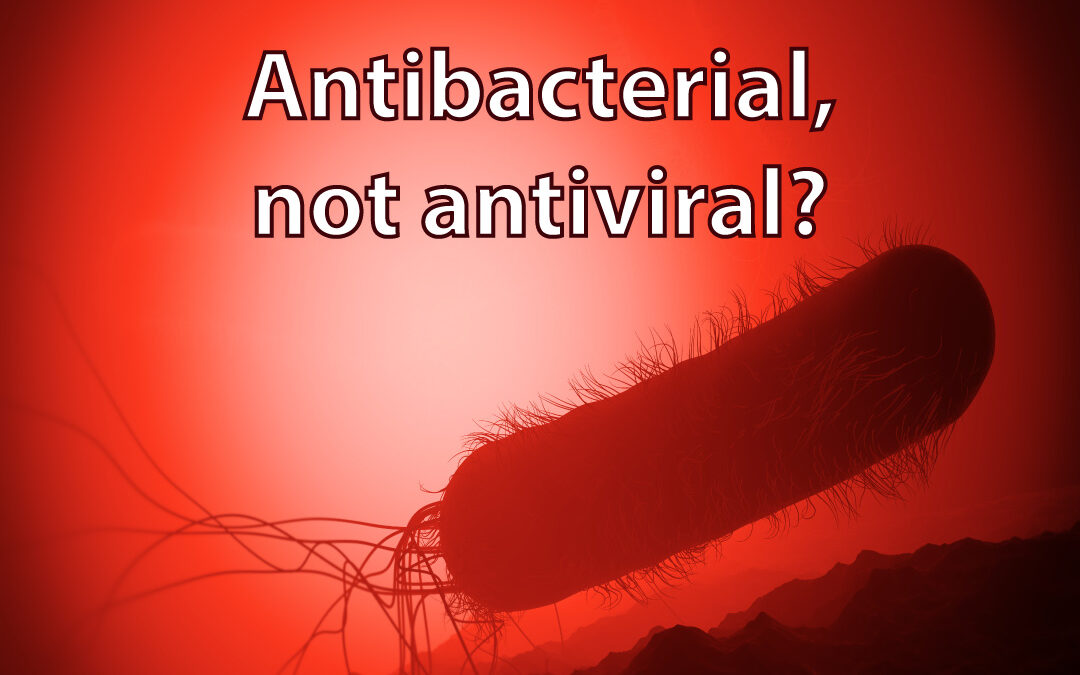Viruses can spread via surfaces
The current coronavirus pandemic has caused an increased demand for anti-microbial treatments that can keep surfaces clean, not only in health care settings but also in our homes and public spaces. The role that surfaces play in the spread of disease was recently emphasized by a study published by Imperial College London (1), showing that a virus applied on a hospital bed rail had spread to 18 other surfaces in just a few hours, including door handles, chairs in a waiting room, and books in a child play area. Although the authors of the study used a virus that infects plants (cauliflower mosaic virus) rather than humans (for obvious ethical reasons), the study shows that a virus that lands on an inert surface can spread and transmit infections a long way.
There is a growing demand for anti-microbial surface cleaners
To limit the spread of infectious diseases, material and chemical manufacturers are working to develop products with anti-microbial, anti-bacterial, or antiviral properties. In the VRS labs, we test samples daily to establish their antiviral activity against different viruses.
Anti-bacterial agents are not always antiviral
In discussions about the potential antiviral properties of a material, many of our customers anticipatetheir product to be antiviral because it has shown “excellent anti-bacterial properties”. However, the reality is that while bacteria and viruses share a nasty reputation as disease agents, they are otherwise hugely different. So, although some anti-bacterial products might also be effective against viruses (most soaps and detergents usually work against both pathogens), there are many examples of anti-bacterial agents that are useless against viruses (and vice versa).
The importance of non-generalizing
Not only an anti-bacterial may not be antiviral, but it is also possible that an antiviral might inactivate one virus, but not other viruses. Indeed, some viruses are recognized as being more difficult to destroy than others (more on this later). So, when making claims about a product’s ability to kill or inactivate microbes, it’s important to be as specific as possible.
The mechanism matters
Focusing on anti-bacterial agents for a moment, we should note that not all anti-bacterials work in the same way or equally against all bacteria. An anti-bacterial treatment that kills or destroys the bacteria is referred to as a bacteriocidal. An anti-bacterial treatment that slows the growth and reproduction of the bacteria (without killing it) is referred to as a bacteriostatic. Anti-bacterial agents also come in various forms; they might be metabolic compounds derived from other microbes (e.g., antibiotics), physical agents (radiations), or chemicals (e.g., alcohols and halogens [iodine, chlorine, and chlorine compounds]). Just to make matters even more complex, those anti-bacterial agents that destroy or inhibit pathogens might also harm our resident beneficial (“friendly”) bacteria.
How useful is a term like anti-microbial?
So, considering how nuanced things can get even when limiting the conversation to anti-bacterial agents, it’s starting to become clear that anti-bacterial and anti-viral agents cannot always be lumped together under a single umbrella term like “anti-microbials”. Indeed, the term microbe can include hugely different forms of life: bacteria, fungi, viruses, algae, archaea, protists. Although some anti-microbial agents (e.g., alcohol-based hand sanitizers) help prevent the spread of bacteria, fungi, parasites, and some viruses, not all anti-microbials will be antiviral.
Bacteria and Viruses: the differences
At this point, it’s worth considering the major differences between the two most common causative agents of infectious disease: viruses and bacteria.
Bacteria are alive, but viruses are more like a malicious software
It’s important to note that viruses and bacteria follow completely different life strategies. Bacteria are single-celled organisms that produce their own energy and reproduce independently, whereas viruses cannot reproduce without a host organism, and hijack their host’s cellular machinery to manufacture more viruses. For this reason, researchers debate about whether a virus is even “alive”.
Bacteria and viruses are vastly different in size
Bacteria and viruses are invisible to the naked eye, yet they are all around us in truly staggering numbers. Bacteria are between 0.2 and 2.0 micrometers in diameter (hundreds of times smaller than the diameter of a human hair!). And given how small bacteria are, it’s impressive that viruses are generally ten- to one-hundred-times smaller than the smallest bacteria. In fact, some viruses (bacteriophages) are also capable of infecting bacteria. While bacteria can be seen under an ordinary light microscope, a virus typically can be observed only with an electron microscope, a much larger and more powerful device.
Viruses and bacteria are made of different macromolecular structures
Most bacteria (about 90%) are enclosed within a rigid cell wall, which can vary widely (e.g., Gram-positive bacteria are characterized by a thicker cell wall relative to Gram-negative bacteria). These outer structures of bacteria perform important functions, including maintaining the cell’s shape and protecting the cells from the environment.
Viruses are much simpler; essentially, small parcels of genetic information wrapped in a protective protein coat (called a capsid), which is sometimes surrounded by an additional spikey coat (called the envelope). Yet a single virus particle can invade a cell, taking over that cell’s machinery to reproduce itself, and once sufficientnew viruses have been built, they rapidly go and infect other cells, often killing infected cells as they spread.
In a nutshell
So, given all the differences between bacteria and viruses, we cannot assume that our favourite “anti-microbial” really does hurt viruses, even if it easily kills E. coli. There are also many unknowns on the physical properties of anti-microbials and their mode of action, or on the differences between the same products in a liquid form or when applied to or embedded in surfaces or fabrics, as well as on the duration of a treatment over time.
As always in science, empirical testing is the only way to determine whether an antibacterial product can also help us against viruses.
Reference
1) COVID-19 pandemic e let’s not forget surfaces, Journal of Hospital Infection 105 (2020) 790e791




